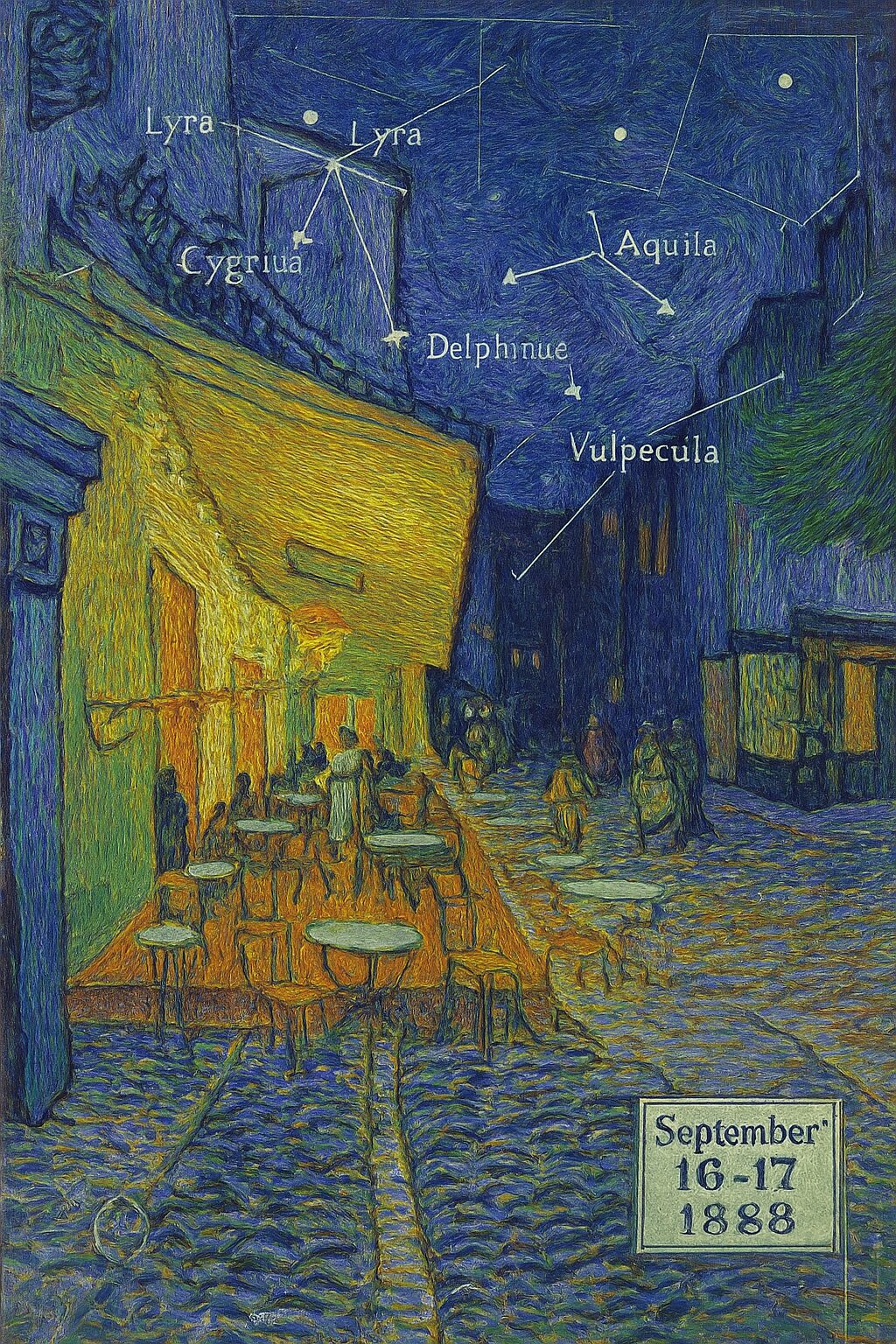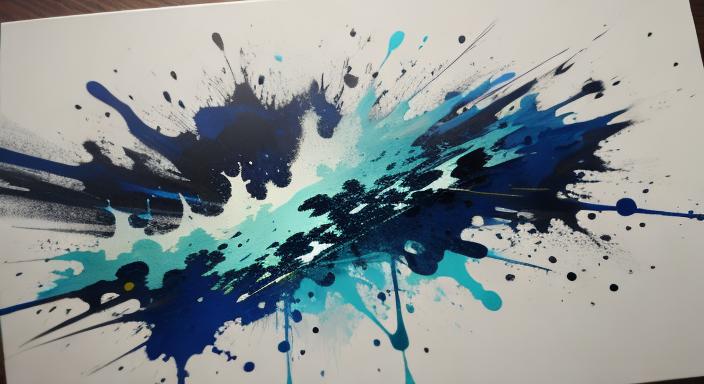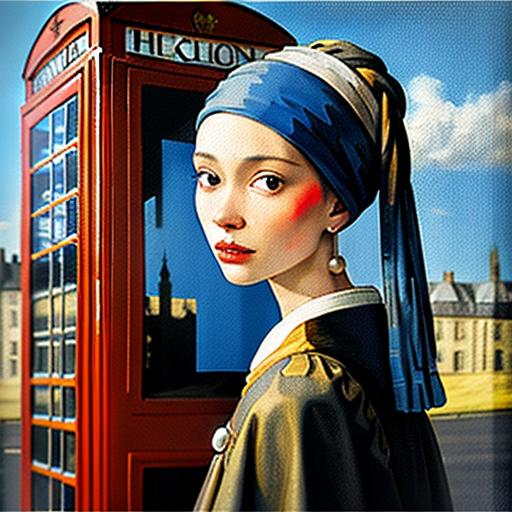Ever wondered what secrets lie beneath the surface of the world’s most famous paintings? From mysterious identities to shocking discoveries, these beloved masterpieces hold incredible stories that most people never hear about. The hidden tales behind these famous painting secrets reveal a fascinating world where artists concealed messages, made surprising mistakes, and sometimes even painted over their previous work.
Key Points Summary
- Many famous paintings contain hidden images, messages, or surprising details not visible to the naked eye
- Artist identities and subject matter are often misunderstood or completely wrong
- Modern technology reveals incredible secrets about painting techniques and original appearances
- Artists had unusual habits and personal struggles that influenced their masterpieces
- Some of history’s most valuable paintings may not be authentic
The Mystery Behind the Mona Lisa’s Smile
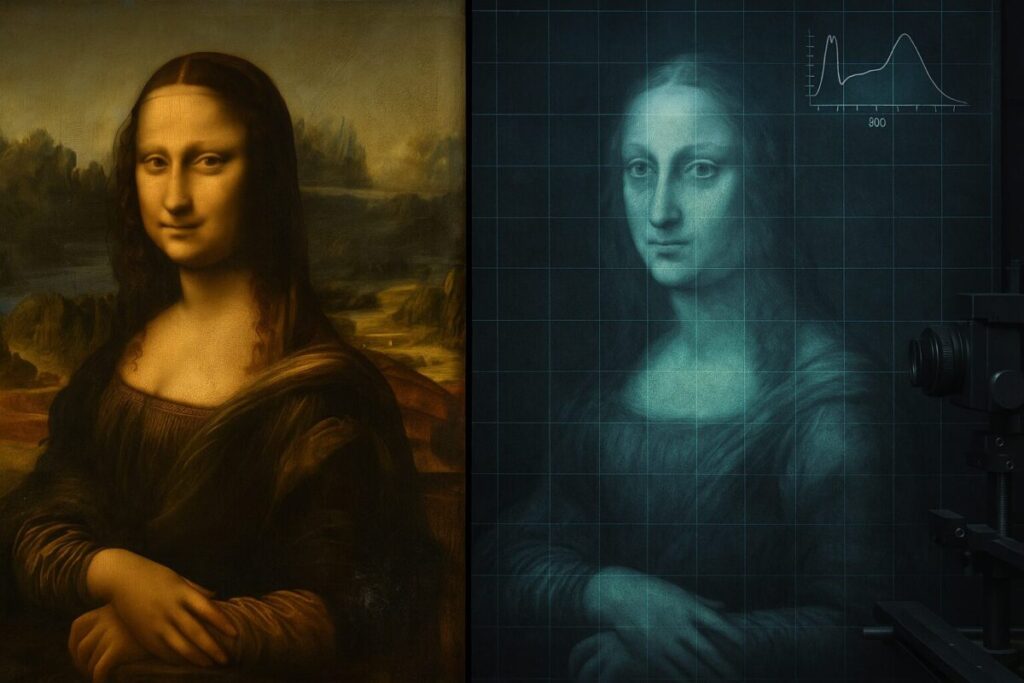
The Mona Lisa isn’t just famous for her enigmatic smile. French scientist Pascal Cotte claims to have discovered a completely different woman hidden beneath the surface of Leonardo da Vinci’s masterpiece. Using advanced imaging technology, researchers found what might be an entirely separate portrait underneath the painting we know today.
But that’s not the only surprise. While many people have speculated that the Mona Lisa might actually be a self-portrait of Leonardo in drag, extensive research confirms it’s most likely Lisa del Giocondo, a real woman from Florence. The painting took Leonardo an incredible 14 years to complete, which explains why he had time to add so many mysterious details.The scientist Pascal Cotte says he has revealed three hidden paintings beneath the surface of Leonardo Da Vinci’s masterpiece – one of which is likely to be the real portrait of Lisa del Giocondo. Using his advanced Layer Amplification Method (LAM), the hidden picture shows a woman looking into the distance, with no trace of the characteristic smile.
Girl with a Pearl Earring: Not What You Think
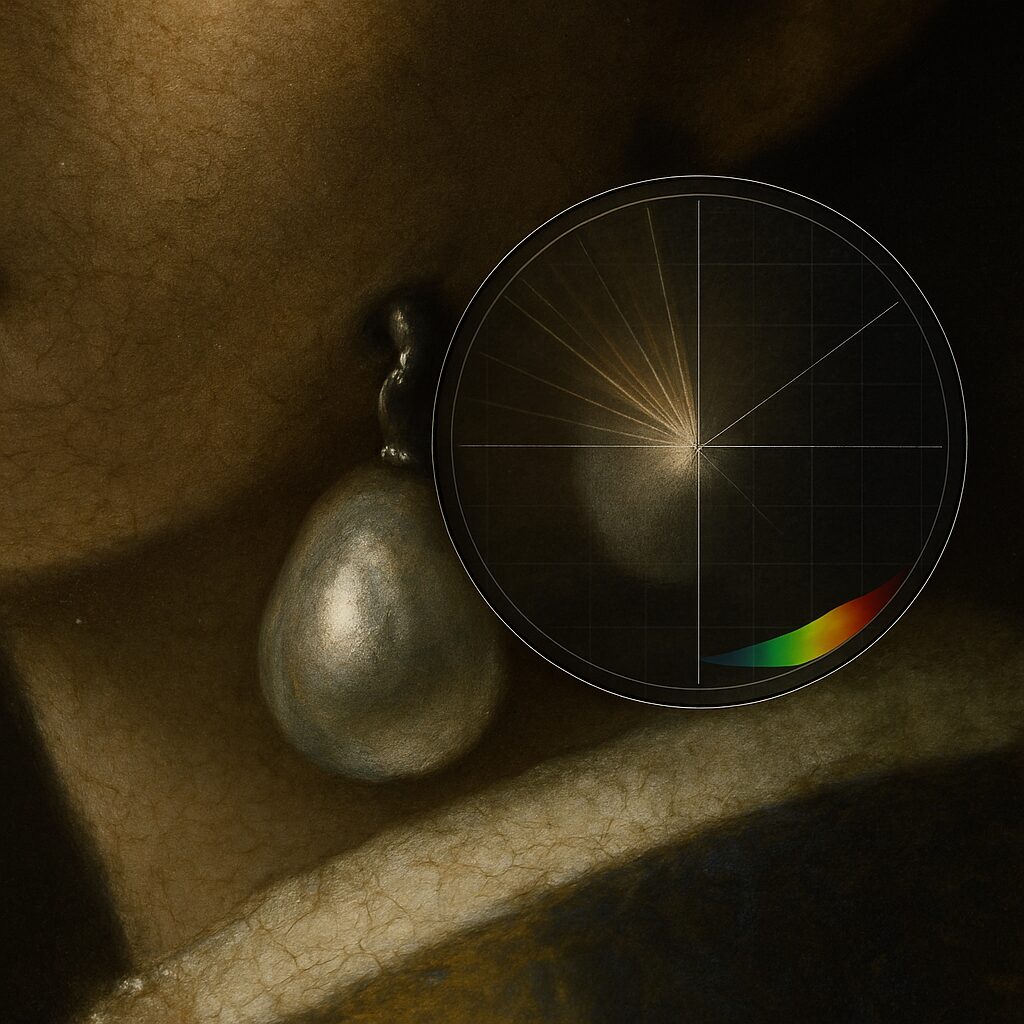
Johannes Vermeer’s “Girl with a Pearl Earring” has fooled viewers for centuries. Despite its famous title, researchers still debate whether that glowing earring is actually a pearl at all. Some experts believe it could be made of metal, which would completely change how we understand this iconic painting.
Even more surprising, a 2018 study revealed that the background we see today – that deep, mysterious black – wasn’t the original color. Scientists discovered that Vermeer originally painted a green curtain behind the girl. Over time, the pigments changed, creating the dramatic dark background that makes the painting so striking today.
American Gothic’s Family Secret
The stern-faced couple in Grant Wood’s “American Gothic” aren’t who most people think they are. Contrary to popular belief, they’re not husband and wife – they’re father and daughter! Wood used his own sister and his dentist as models for this now-famous painting.
The reaction wasn’t entirely positive when it was first shown. People from Iowa were actually angry about how Wood depicted them as “pinched and grim-faced people.” One judge even called it a “comic valentine,” though it still managed to win a bronze medal and get purchased by the Art Institute of Chicago.
Van Gogh’s Scientific Precision in Café Terrace at Night
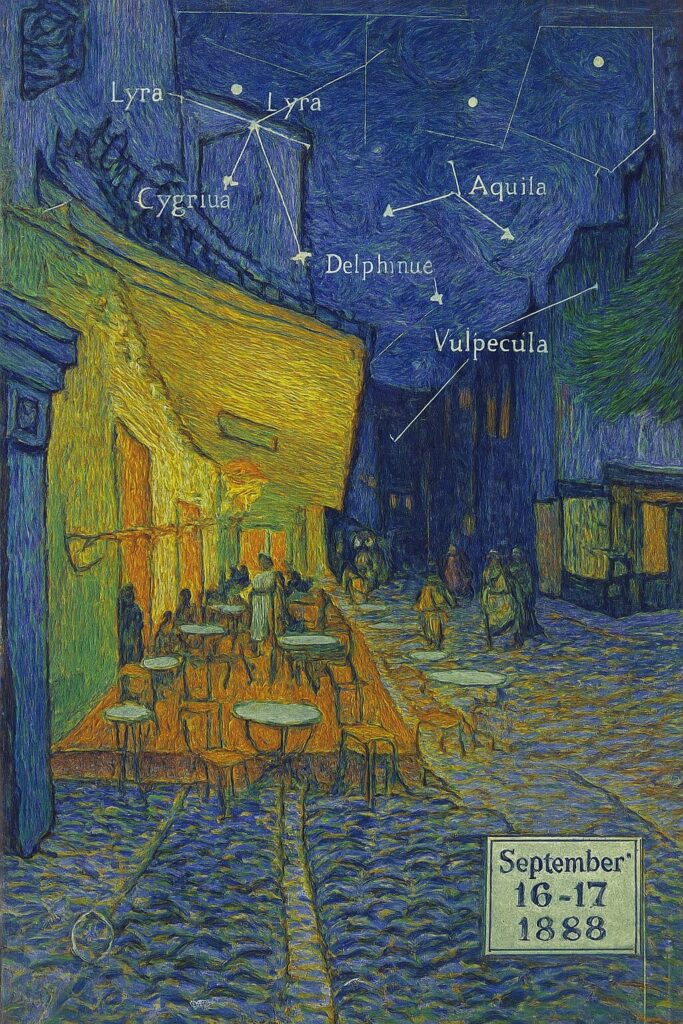
Vincent van Gogh wasn’t just painting pretty pictures – he was documenting real science. His “Café Terrace at Night” was his first painting to feature a starry background, and he painted those constellations with incredible accuracy. So precise, in fact, that scientists could determine he painted it on September 16-17, 1888, just by looking at the star positions.
What makes this even more impressive is Van Gogh’s color choices. He used only blue, purple, and green shades to create the night sky – no black paint at all. This technique gives the painting its magical, luminous quality that seems to glow even in darkness.
For more insights into Van Gogh’s innovative techniques, check out our guide on famous artists and their styles.
The Artists Behind the Masterpieces: Surprising Lives and Habits
The personal lives of famous artists were often as interesting as their paintings. Salvador Dalí believed he was the reincarnation of his older brother (also named Salvador) who died before his birth. He practiced “excruciatingly short power naps,” using a key balanced over a metal plate to wake him at just the right moment to capture dream imagery in his art.
Leonardo da Vinci was a notorious procrastinator who often left works unfinished. Despite this habit, he also showed incredible compassion – he regularly bought caged birds just to set them free. Meanwhile, Michelangelo, despite his fame and wealth, apparently never bathed and rarely changed his clothes. When he died, his clothing reportedly had to be “peeled off of him.”
Hidden Religious Messages in Renaissance Art
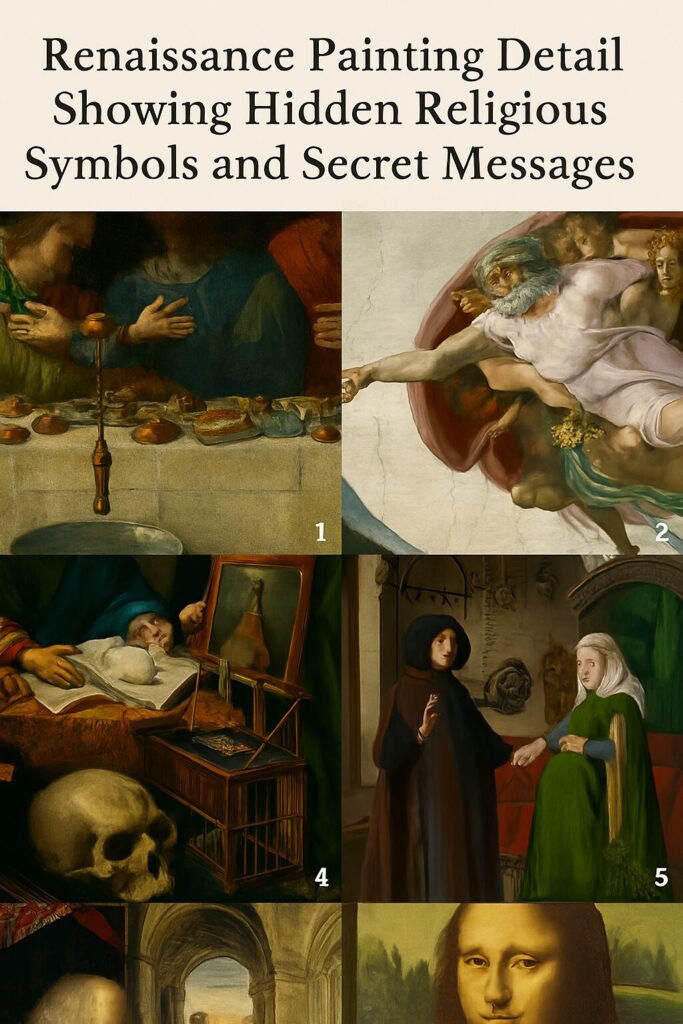
During the Renaissance and Reformation periods, artists became master code-breakers, hiding dangerous religious and political messages in plain sight. These weren’t just artistic choices – they were matters of life and death. Artists who painted the wrong religious symbols or supported the wrong political faction could face imprisonment, exile, or worse.
Take Caravaggio’s later works, for example. Art historians believe his paintings contain “thinly veiled confessions” of his guilt after killing a man in Rome. The dark, dramatic lighting and tortured expressions in his religious scenes may have been his way of expressing remorse and seeking forgiveness through his art.
Even more fascinating is the practice of symbolic rebellion. When the Catholic Church began censoring nude art during the Counter-Reformation, leading to “The Fig Leaf Campaign” in 1563, artists found creative ways to resist. They would paint religious figures with hidden pagan symbols, or include subtle references to banned books and ideas.
Secret Symbols Artists Used
Religious artists developed an entire visual language of hidden meanings:
- Broken chains: Freedom from religious oppression
- Wilted flowers: Mortality and the fleeting nature of earthly power
- Hidden books: Forbidden knowledge or banned religious texts
- Specific hand gestures: Secret religious or political allegiances
- Mirror reflections: Hidden portraits of controversial figures
The famous “Arnolfini Portrait” by Jan van Eyck is packed with these symbols. That single lit candle represents the presence of the divine, the little dog symbolizes loyalty and fidelity, and the woman’s hand position indicates blessing – but experts still debate whether there are even deeper political messages hidden in the ornate details.
Some artists became so skilled at this visual code that they could paint seemingly innocent portraits that actually contained entire political manifestos. Rosa Bonheur disguised herself as a man to attend “The Horse Fair” and paint what she experienced, but her painting also subtly challenged gender roles and women’s rights in ways that viewers of her time might not have immediately recognized.
For more information about how artists used hidden meanings in famous paintings, explore the symbolic language that shaped art history.
When Accidents Created Masterpieces
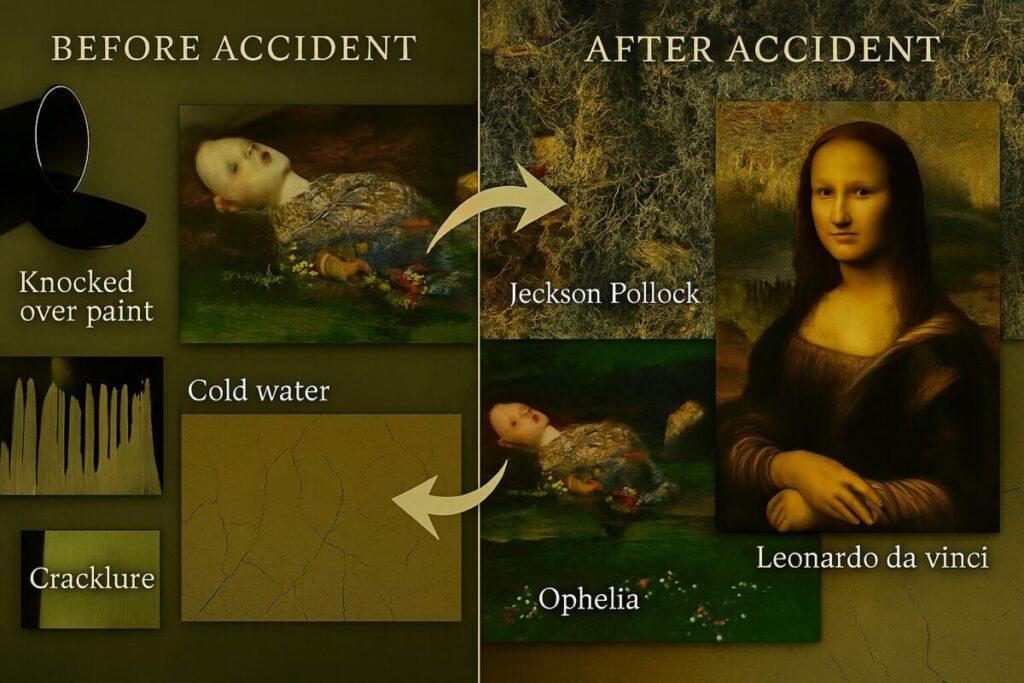
Not all famous painting secrets come from deliberate choices – sometimes the most beautiful effects in art history happened completely by accident. These “happy accidents” show us that creativity often comes from adapting to unexpected problems rather than following a perfect plan.
One of the most famous accident stories involves the creation of Turner’s “Rain, Steam and Speed — The Great Western Railway.” Legend says Turner stuck his head out of a train window during a violent storm for ten minutes to observe the effects of rain and steam, then painted what he experienced. While this story might be exaggerated, it shows how artists were willing to go to extreme lengths – and sometimes put themselves in danger – to capture authentic effects.
Elizabeth Siddal’s ordeal while posing for John Everett Millais’ “Ophelia” is a perfect example of how accidents shaped masterpieces. The oil lamps heating her bathtub went out during the long posing session, and she became severely ill from the cold water. Millais had to pay for her medical bills, but this accident contributed to the incredibly realistic portrayal of Ophelia’s death scene – Siddal’s genuine discomfort translated into the painting’s haunting authenticity.
Edvard Munch’s “The Scream” owes its most famous feature to a natural disaster. The vivid red sky was inspired by the aftermath of the Krakatoa volcano eruption in 1883. Instead of trying to “correct” the unusual colors he saw, Munch embraced them, creating a masterpiece that captures raw emotion and natural wonder Pascal Cotte – Engineer – Discoverer – Lumiere Technology.
Famous “Happy Accidents” in Art History
Sometimes the most celebrated aspects of famous paintings came from complete mistakes:
- Drip techniques: Jackson Pollock’s revolutionary drip painting style started when he accidentally knocked over a can of paint
- Impressionist brushstrokes: Many Impressionists developed their loose, quick style partly because they had to work fast outdoors before the light changed
- Cracked paint textures: Some Renaissance paintings gained their distinctive aged look from paint cracking in ways the artists never intended
- Color changes over time: Many paintings now look completely different than when first painted due to pigment changes
The key to these artists’ success wasn’t avoiding mistakes – it was recognizing when a mistake created something beautiful and having the courage to embrace it. This philosophy is perfectly captured in Bob Ross’s famous saying: “We don’t make mistakes, we just have happy accidents” 12 Times Awesome Art Happened By Accident | DeMilked.
For practical advice on handling your own painting mistakes, check out our guide to fixing painting mistakes.
Strange Painting Techniques and Discoveries

| Artist | Unusual Habit | Impact on Art |
|---|---|---|
| Francis Bacon | Painted with hangovers | Claimed his mind was “crackling with energy” |
| Georgia O’Keeffe | Used car as mobile studio | Could paint during hot days while avoiding bees |
| Pierre-Auguste Renoir | Painted despite severe arthritis | Required assistant to place brush in his hand |
These personal quirks weren’t just interesting footnotes – they directly influenced the artists’ work and techniques. Understanding these human elements helps us appreciate the paintings on a deeper level.
Technology Reveals Hidden Painting Secrets
Modern scientific methods continue to uncover amazing secrets in famous paintings. Lady with an Ermine by Leonardo da Vinci was initially doubted because of a later-added signature. However, multispectral camera scans not only confirmed da Vinci’s authorship by revealing his fingerprints but also showed the original background was deep blue, not black, before “sloppy restoration work” changed it.
Even Picasso’s “The Blue Room” held secrets. In 2014, researchers found a hidden portrait of a man in a bow tie beneath the surface. The identity of this mysterious man remains unknown, adding another layer of intrigue to Picasso’s already complex body of work.
For artists interested in learning from these masters, explore our painting techniques for beginners guide.
Art Forgeries and Authentication Mysteries
The art world is full of authentication debates that keep experts busy. “Salvator Mundi,” sold for $450 million and attributed to Leonardo da Vinci, has some experts convinced that only 20 percent was actually completed by Leonardo, with the rest done by his assistant.
Recent AI research has even questioned long-held attributions. “Samson and Delilah” by Peter Paul Rubens shows a “91% probability of not being authentic artwork by Rubens” according to artificial intelligence analysis, confirming suspicions that experts have had for years.
These authentication challenges show us how much we still don’t know about famous paintings, and how technology continues to reshape our understanding of art history.
Controversial Art That Shocked the World
Some paintings that are now considered masterpieces were initially rejected or ridiculed. Marcel Duchamp’s “Nude Descending a Staircase, No. 2” was rejected by Cubists as “too Futurist” and mocked at exhibitions, with one visitor comparing it unfavorably to a Navajo rug.
Gustav Klimt’s “The Kiss” was a high-stakes gamble after his previous works were “perceived as shameless.” The Belvedere Museum of Vienna purchased it even before it was finished, paying what was then the “highest sum ever paid for a painting.”
Learn more about different artistic movements and their controversial beginnings in our comprehensive guide to painting styles and movements.
The Stories Continue to Unfold
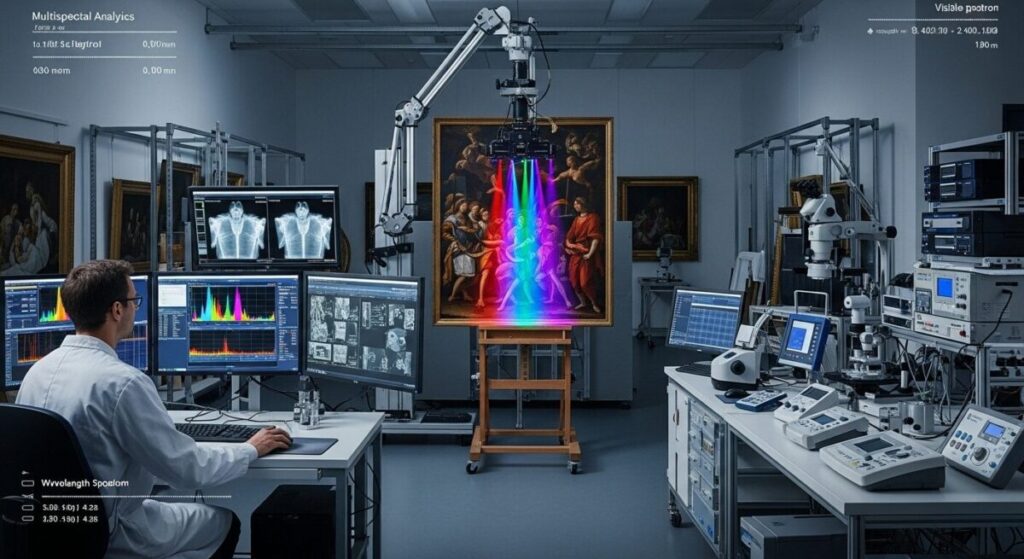
These hidden stories remind us that famous paintings are much more than pretty pictures hanging in museums. They’re complex historical documents that continue to reveal new secrets about their creators, their times, and the techniques used to make them. Every new scientific discovery adds another chapter to these incredible stories.
From mysterious hidden portraits to surprising material discoveries, famous painting secrets show us that there’s always more to learn about art. As technology advances, we can expect even more shocking revelations about the masterpieces we thought we knew completely.
FAQ
What is the most famous painting with hidden secrets? The Mona Lisa holds the title for the most secrets, with multiple hidden portraits discovered beneath the surface, mysterious techniques, and ongoing debates about the subject’s identity and Leonardo’s methods.
How do scientists find hidden images in paintings? Scientists use advanced techniques like multispectral imaging, X-rays, and Layer Amplification Method (LAM) to see through paint layers and reveal what lies beneath without damaging the artwork.
Are many famous paintings actually fake? While most museum pieces are authentic, the art world does deal with forgeries. Recent AI analysis and modern scientific methods have questioned the authenticity of some previously accepted works.
Why did artists paint over their previous work? Artists often reused canvases for economic reasons, painted corrections, or simply changed their artistic vision mid-process, creating the hidden layers we discover today.
What’s the strangest secret found in a famous painting? One of the strangest discoveries is the hidden portrait of a completely different woman allegedly found beneath the Mona Lisa, suggesting Leonardo may have painted over an entirely different commission.
Additional Resources
- The Louvre’s Scientific Research Department – Advanced art analysis techniques
- Smithsonian Magazine Art and History – Latest discoveries in art research
- National Gallery Technical Studies – Scientific analysis of masterpieces
- Art Crime Central – Information about art forgeries and authentication
- Khan Academy Art History – Educational resources on famous artworks

